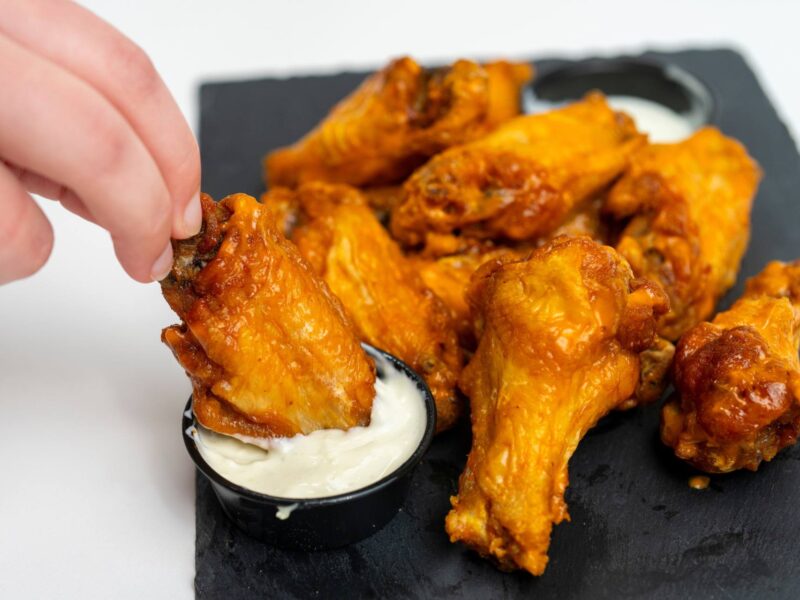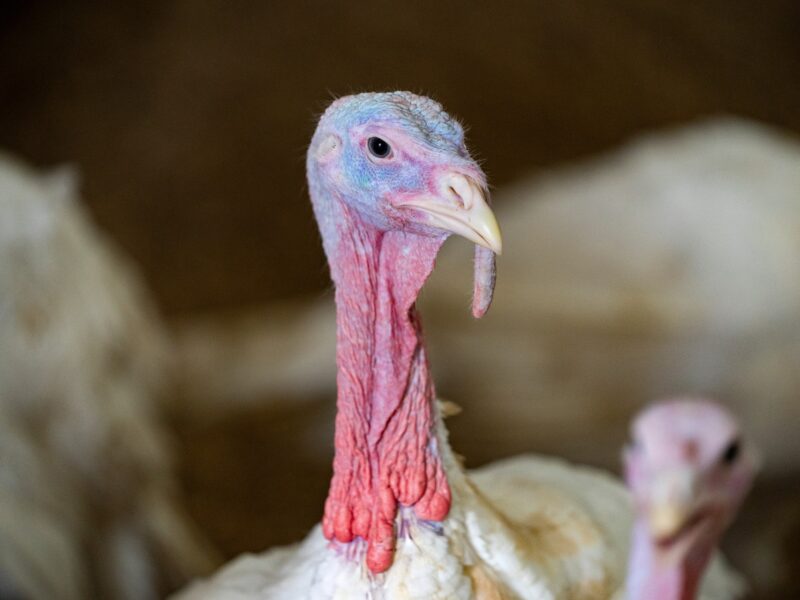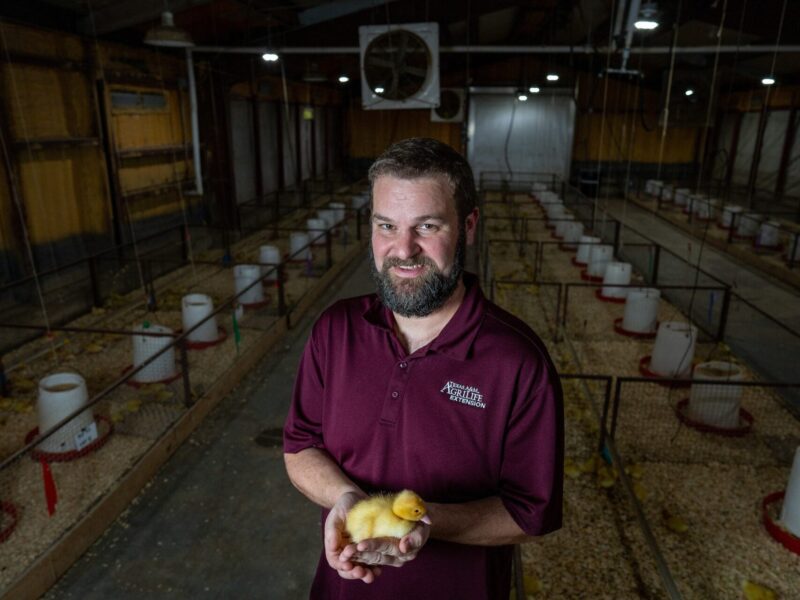What Is Avian Influenza?
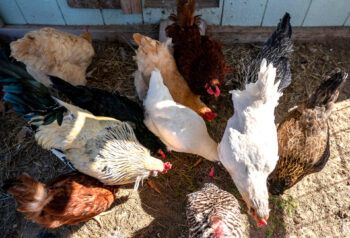
Highly pathogenic avian influenza (HPAI), sometimes referred to as “bird flu,” is something that has affected almost everyone, whether they realize it or not.
This is the virus that is causing disruptions in the poultry industry, triggering a price increase on eggs and other poultry products in the grocery store not felt since the last time the U.S. experienced a major avian influenza outbreak in 2015.
But this time is different, according to Texas A&M AgriLife experts.
Martin Ficken, resident director at the Texas A&M Veterinary Medical Diagnostic Laboratory (TVMDL) in Gonzales, is an expert in poultry diseases with an emphasis on HPAI. Below, he explains what makes this virus so devastating and what should be done if you think you have an infected flock.
What is avian influenza?
It is a viral infection in the same class as human influenza and can present as a respiratory infection. Avian influenza has a high morbidity and mortality rate, approaching 100%. An infected bird will infect other birds very quickly, with death almost certain with 48 hours.
Where does avian influenza come from and how is it spread?
The virus has been spread around the country to every state in the U.S. except Hawaii by the wild bird population. They serve as carriers and spread it as they migrate. Poultry and other birds can pick up the virus particles via respiratory exposure as well as through feces.
Poultry can pick it up simply by being in the same space where an infected wild bird once stood. While avian influenza is of greater concern to commercial poultry producers, backyard flock owners can have birds become infected.
The virus thrives in cold weather. Previous outbreaks in the U.S. have subsided in summer months due to the heat, however, the most recent outbreak that began in 2021 did not. It diminished, but never completely went away, so it is no longer considered an exotic virus that can be eradicated. It is here to stay.
What symptoms should poultry owners look for in their flock?
The first thing people will likely notice is dead birds. They may also notice birds that are lethargic, have ruffled feathers or look depressed. Essentially, what you would imagine when you think of a sick bird. If people happen to see an infected bird while still alive, it will very likely die within hours to a day.
What should you do if you suspect a bird in your flock has avian influenza?
There really is no treatment for sick birds due to the morbidity and mortality rate of avian influenza. If producers suspect they have infected birds, the best thing to do is contact the Texas Animal Health Commission, TVMDL or their local Texas A&M AgriLife Extension Service agent.
Anyone at those agencies can guide them through the appropriate next steps, which will include submitting samples to TVMDL for testing. A confirmed positive test triggers a series of regulatory processes that could eventually result in facility quarantine and depopulation.
What can producers do to protect their flocks against avian influenza?
The most important thing for anyone raising poultry is to be vigilant and strict with their biosecurity measures. Prevention is really the only treatment for avian influenza.
While it would be best not to let others on your poultry premise, if you must, make sure they follow all biosecurity protocols such as a change of clothes and shoes. It would also be best if producers didn’t visit other poultry premises and follow strict biosecurity guidelines themselves.
While it may seem harmless to do something as simple as wearing the same pair of shoes into your building as you wore to the grocery store, you don’t know where people at the store have been and what you could be carrying back to your flock. Prevention and biosecurity are key factors in protecting flocks.
The same general principles apply to backyard flock owners as well. It is also important not to let your poultry comingle with wild birds or in areas where wild birds have access, especially ponds that may attract ducks and geese. That is where some of the positive cases in Texas originated.
Can I get avian influenza?
At this time, human contraction is not a concern. Birds and eggs destined for the food supply are tested for avian influenza. If a bird with the virus particles were to inadvertently be consumed, standard cooking protocols would kill the virus.
While no positive cases in humans have been found, there have been several mammal species that have contracted the virus and most are considered dead-end hosts, meaning they will not pass it on. The U.S. Department of Agriculture has reported avian influenza in raccoons, skunks, bears, bobcats, foxes, coyotes, harbor seals and bottlenose dolphins. With the exception of the seals and dolphins, those cases were all in the northern portions of the continental U.S.
How many positive cases has Texas had?
Texas has had three poultry premises test positive for birds with the virus, but at this time, none were commercial premises. Additionally, there have been a number of wild birds and zoo animals testing positive in the state.
As of the beginning of February, on a nationwide basis, there have been 403 positive commercial poultry premises and 342 positive non-commercial premises in 47 states. Louisiana and West Virginia are the only two states to have only wild bird detections at this time. A total of 49 states have had 5,956 detections in 142 species of wild birds.
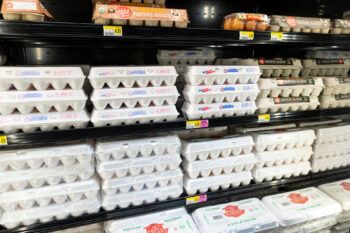
What happens next?
Regulatory agencies will continue to monitor the spread of avian influenza. Testing will continue to be done on birds and eggs destined for the food supply and regularly mandated testing will continue for commercial premises. No vaccine is currently available, but that is being discussed as a possible solution.
The high morbidity and mortality rate of the virus, coupled with depopulations for infected flocks, will continue to influence egg and poultry prices at the grocery store.
According to the Centers for Disease Control and Prevention, at this time, more than 58 million birds have been affected by avian influenza. As of January, the USDA Economic Research Service reports that over 43 million of those losses were in commercial egg-laying operations. When a major laying operation goes down, millions of eggs are no longer being added to the supply chain daily. It will take time for affected premises to repopulate their flocks and time for consumers to feel that effect at the grocery store.
Additional information on avian influenza and biosecurity practices can be found here: tx.ag/AIandBiosecurity.
Those interested in avian testing should call one of TVMDL’s poultry laboratories in Gonzales or Center, or one of the agency’s full-service laboratories in College Station or Canyon. For more information on TVMDL’s testing services, visit tvmdl.tamu.edu.
This article by Maggie Berger originally appeared on AgriLife Today.
